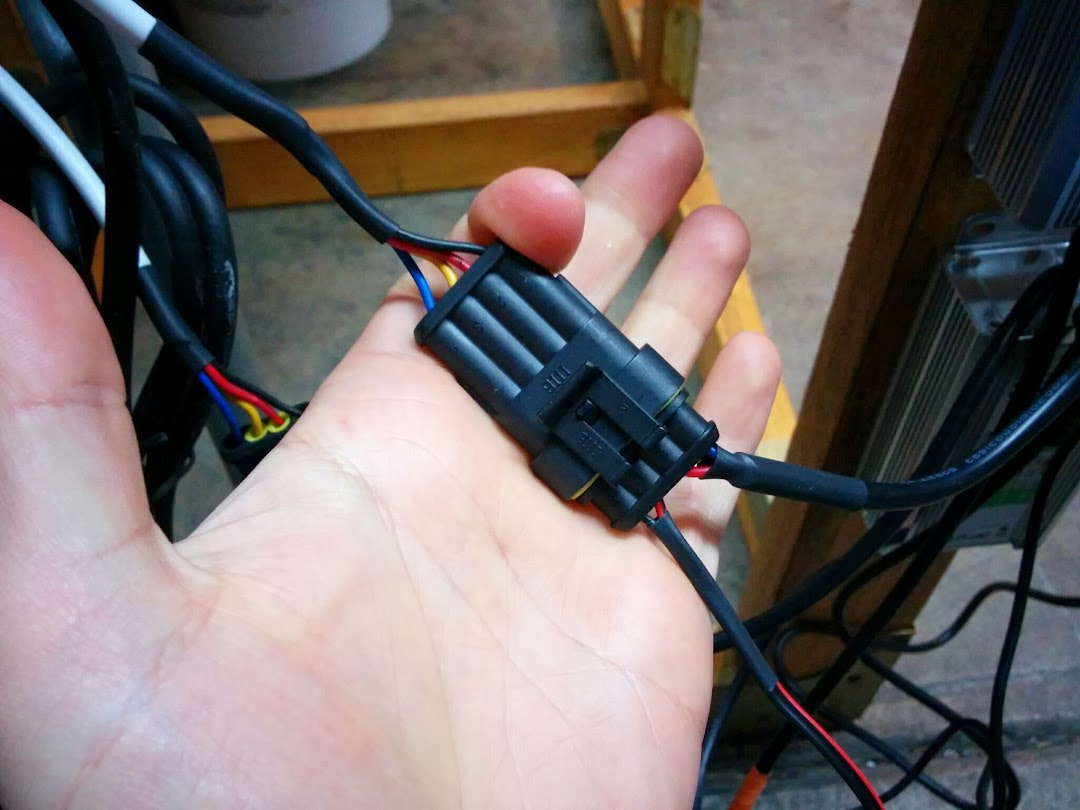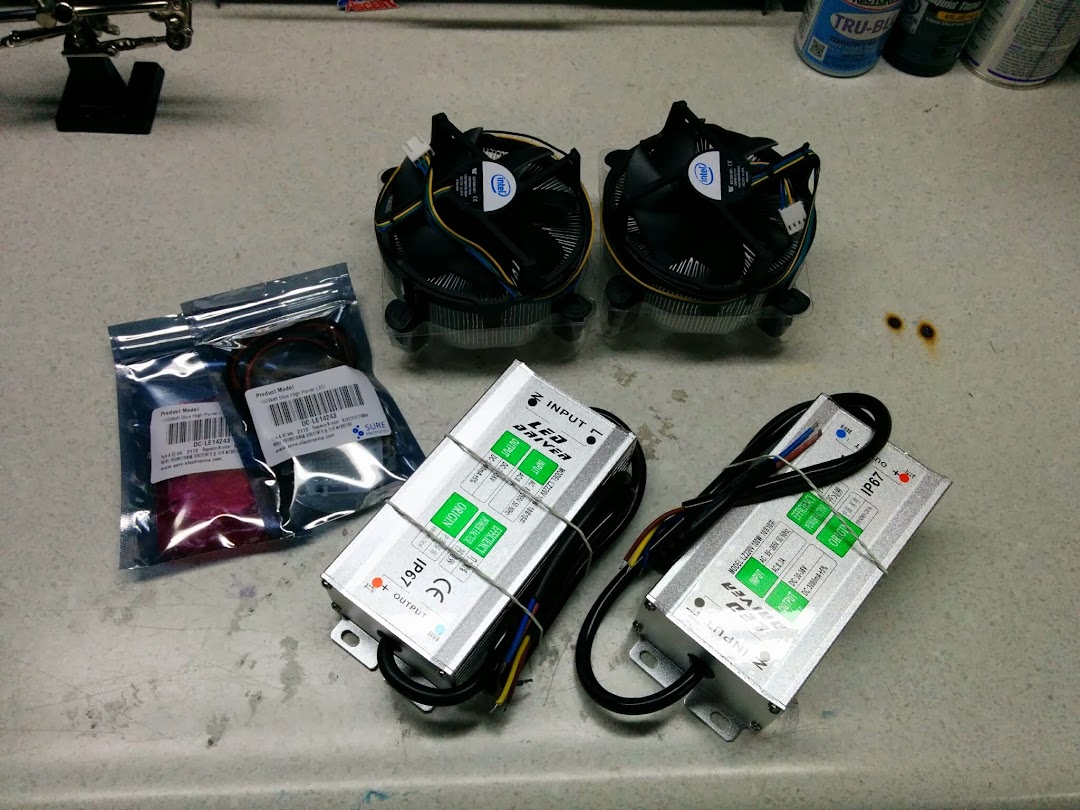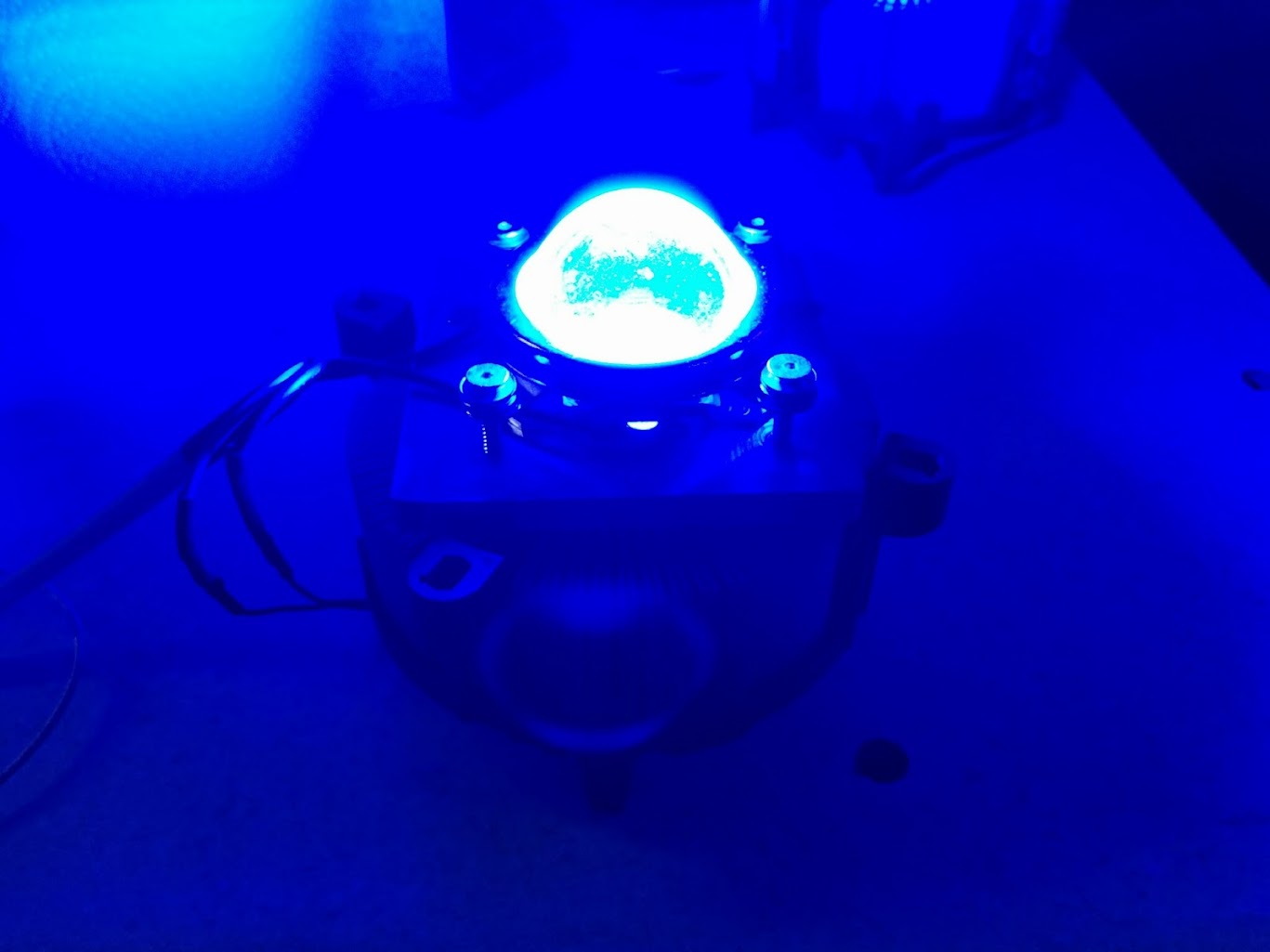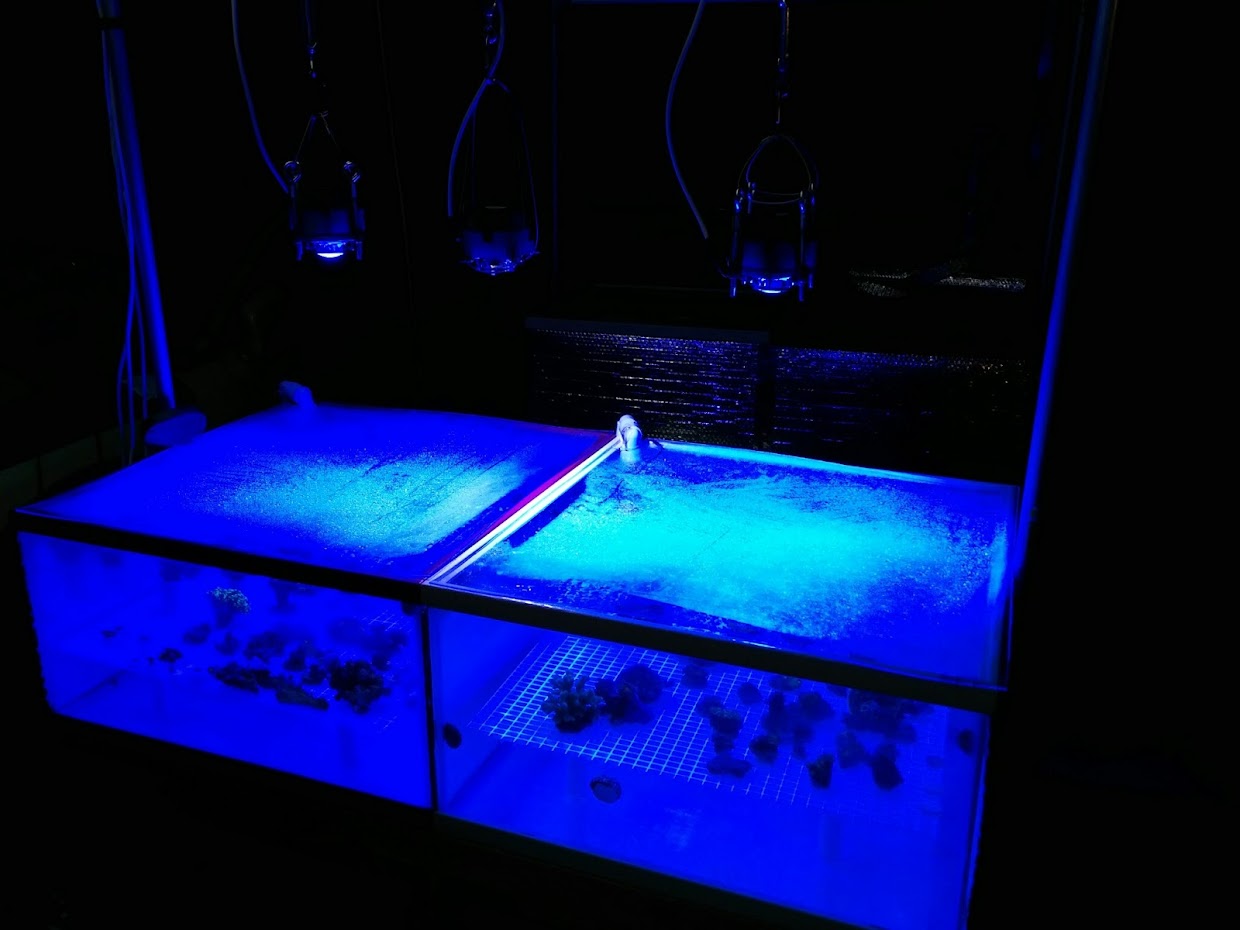Intrigued by the simplicity of multi chip LED's, I decided to dive into it and give it a try.
I started by researching a lot, while they are not full spectrum, I figured I'd still give them a try. My thought process was I can add other colors at a later point of time if I wanted to get those other colors... I went to ebay and picked up 2x LED's (Super Actinic/White Hybrid) and 2x matched power supplies (Sadly they are not meanwell's, but they are better than the open PCB ones at least...).
The LED's are listed as:
Color Temperature/Wavelength: 40 chips 10000-15000K + 60 chips 445-460nm Royal Blue
LED chips: EPISTAR ES-B4545V-A3 45x45 mil
Lense: 60-80 degrees.
Below are some build photos. I set it up quickly to test it, without doing a completely shotty job. I do not intent them to be permanent as I want more water-proofing before they go up above a tank.

Driver's that were included. Pretty loose spec's...
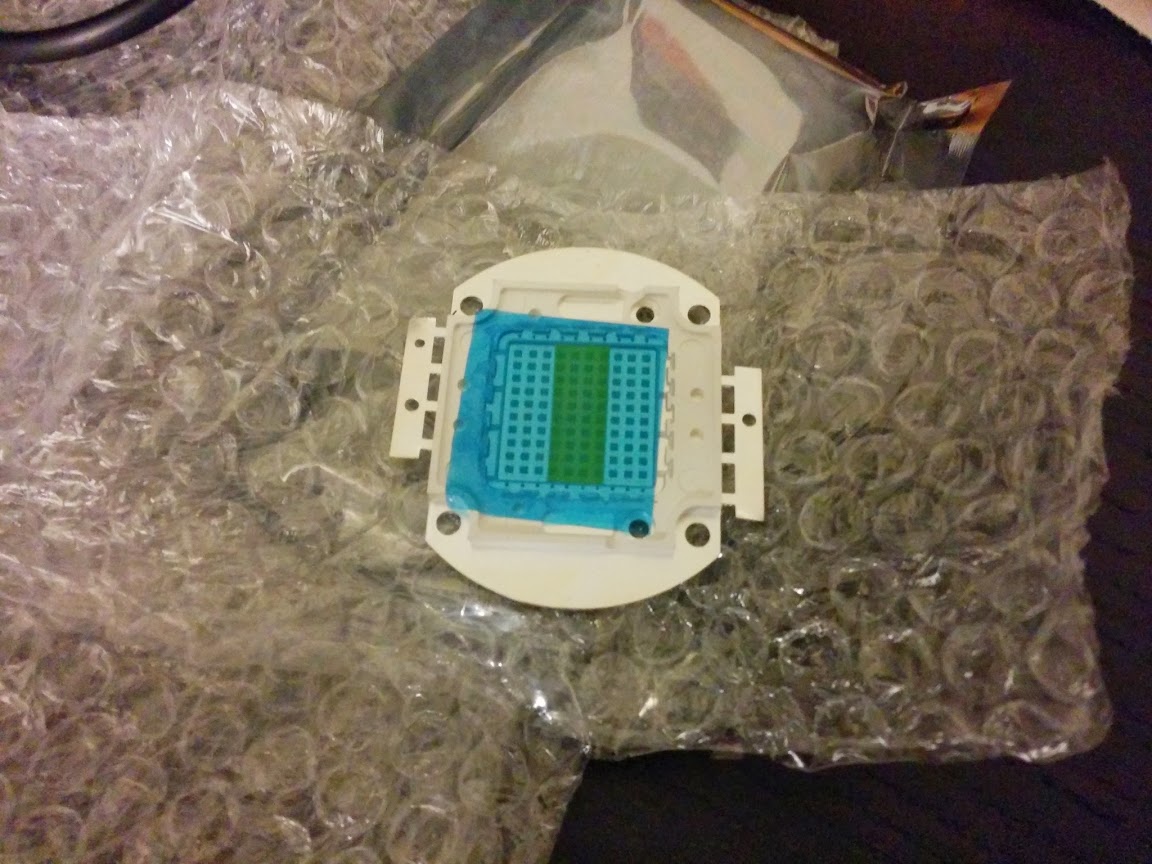
LED Chips

Decided to "hold" the LED to the CPU Heatsink by screwing it in (drilled/tapped 6-32)
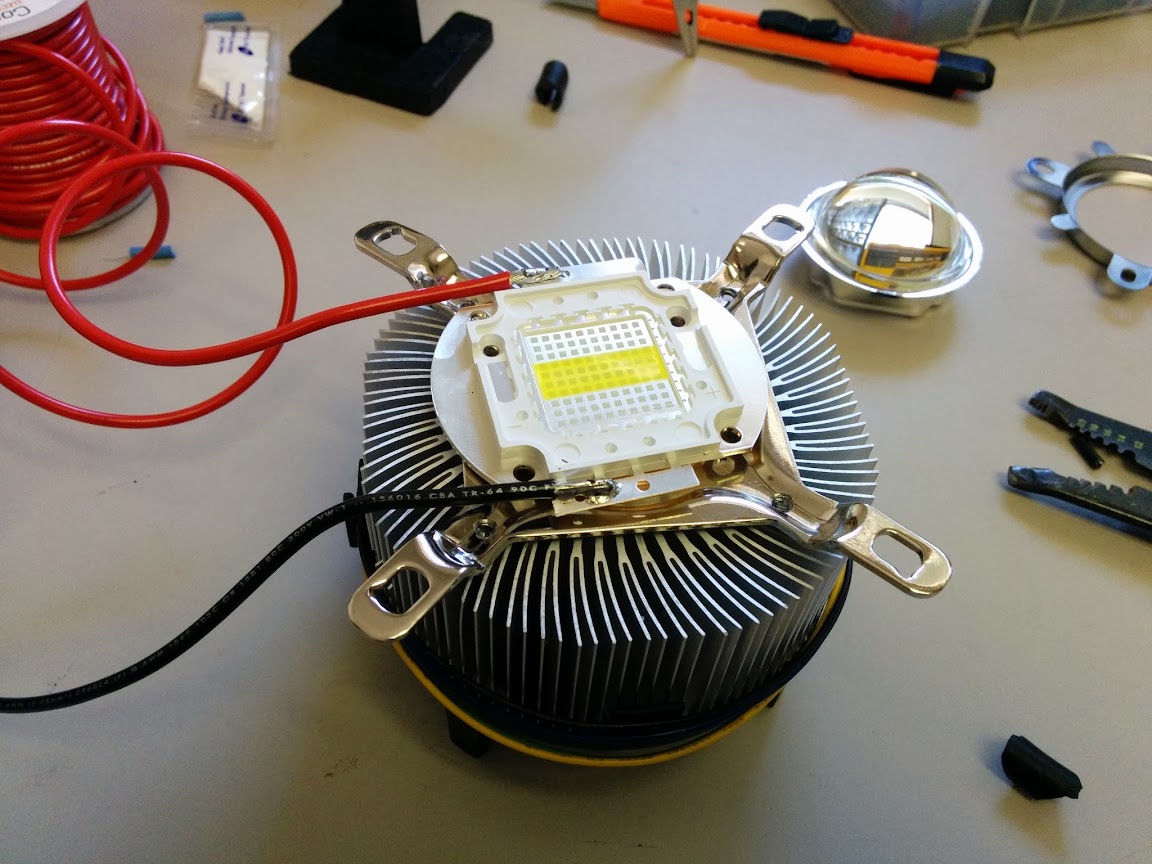
Quick solder job...

With the lens on it (60-80 degrees). Thermal paste between the CPU heatsink and LED of course.

First time powered on.

The light pattern... Not very good spread for the blues...
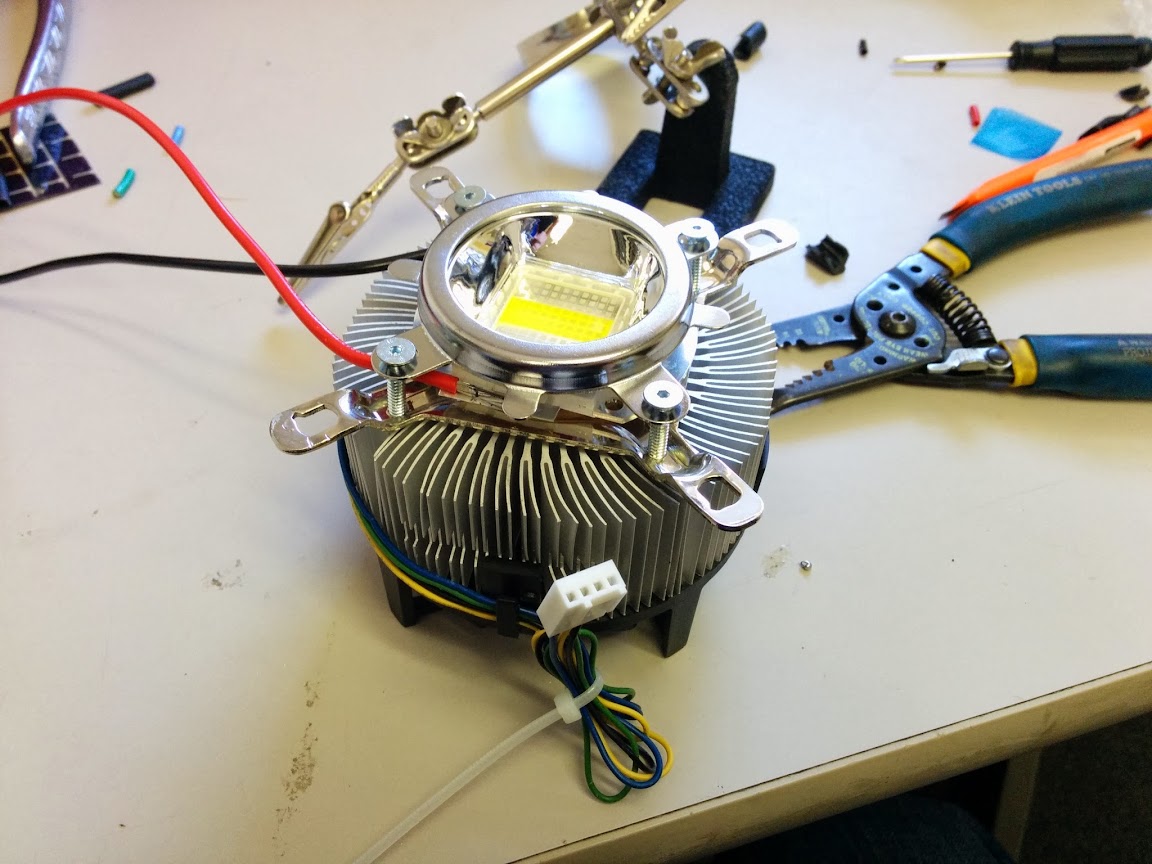
Second one, just no lens to see how it did. (the color was better...)

Both together.

Fired on.
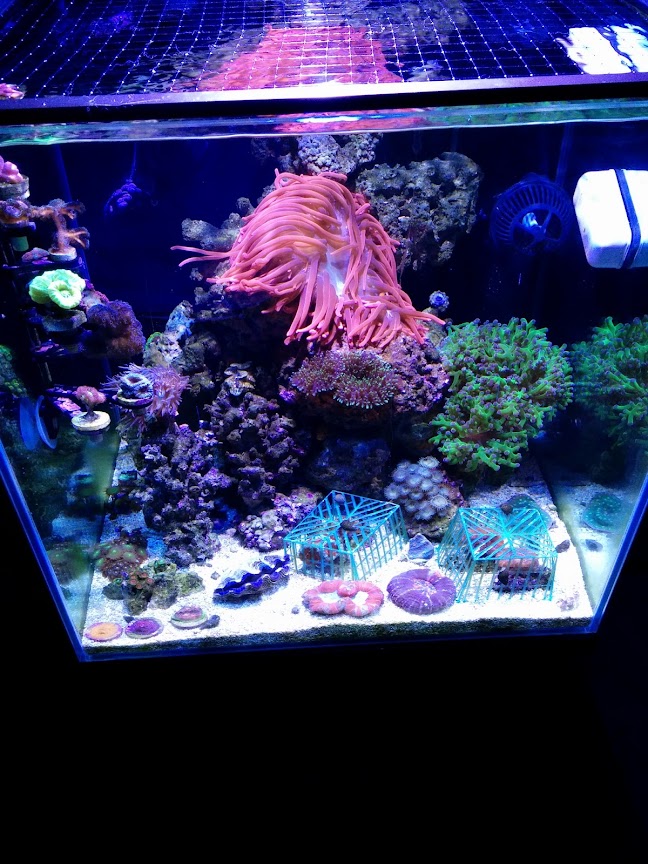
This is above my 30g with the Kessil A350W off.
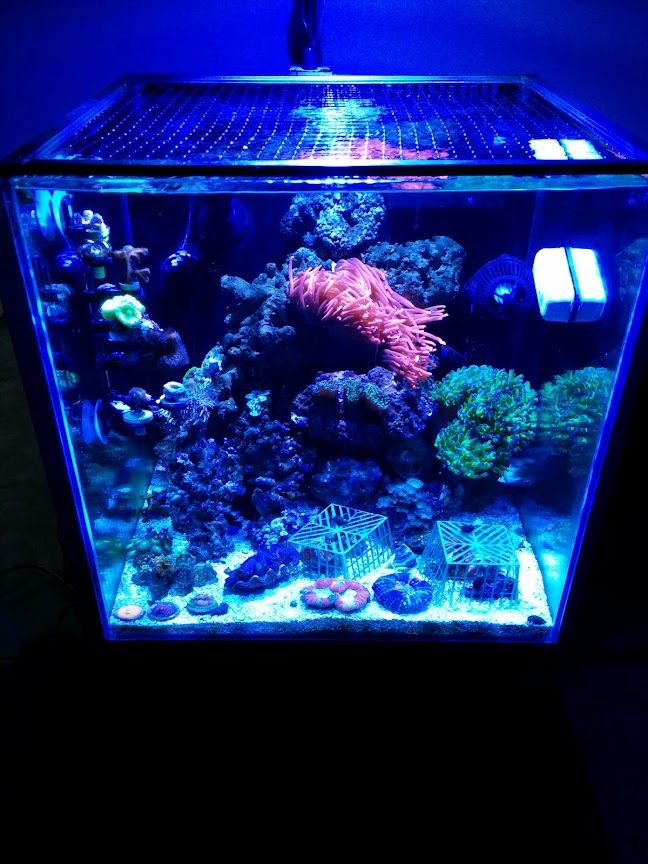
Kessil A350W comparison (on full power, both channels)
Initial thoughts:
I've already ordered some 100w 450-460nm's. I may do every other as one of those. I am also going to buy a different lens. The 60-80 degrees is way too tight, while the open (120-140degrees) is too scattered. Overall assuming I can get decent growth this is a very cheap alternative. With what I have here (including the 450-460nm LED's) I've spent around $150.
I started by researching a lot, while they are not full spectrum, I figured I'd still give them a try. My thought process was I can add other colors at a later point of time if I wanted to get those other colors... I went to ebay and picked up 2x LED's (Super Actinic/White Hybrid) and 2x matched power supplies (Sadly they are not meanwell's, but they are better than the open PCB ones at least...).
The LED's are listed as:
Color Temperature/Wavelength: 40 chips 10000-15000K + 60 chips 445-460nm Royal Blue
LED chips: EPISTAR ES-B4545V-A3 45x45 mil
Lense: 60-80 degrees.
Below are some build photos. I set it up quickly to test it, without doing a completely shotty job. I do not intent them to be permanent as I want more water-proofing before they go up above a tank.

Driver's that were included. Pretty loose spec's...

LED Chips

Decided to "hold" the LED to the CPU Heatsink by screwing it in (drilled/tapped 6-32)

Quick solder job...

With the lens on it (60-80 degrees). Thermal paste between the CPU heatsink and LED of course.

First time powered on.

The light pattern... Not very good spread for the blues...

Second one, just no lens to see how it did. (the color was better...)

Both together.

Fired on.

This is above my 30g with the Kessil A350W off.

Kessil A350W comparison (on full power, both channels)
Initial thoughts:
- It's much more "white" than I expected.
- Brighter than the Kessil by far (not sure if this is just because of the color diff (white/blue).
I've already ordered some 100w 450-460nm's. I may do every other as one of those. I am also going to buy a different lens. The 60-80 degrees is way too tight, while the open (120-140degrees) is too scattered. Overall assuming I can get decent growth this is a very cheap alternative. With what I have here (including the 450-460nm LED's) I've spent around $150.





